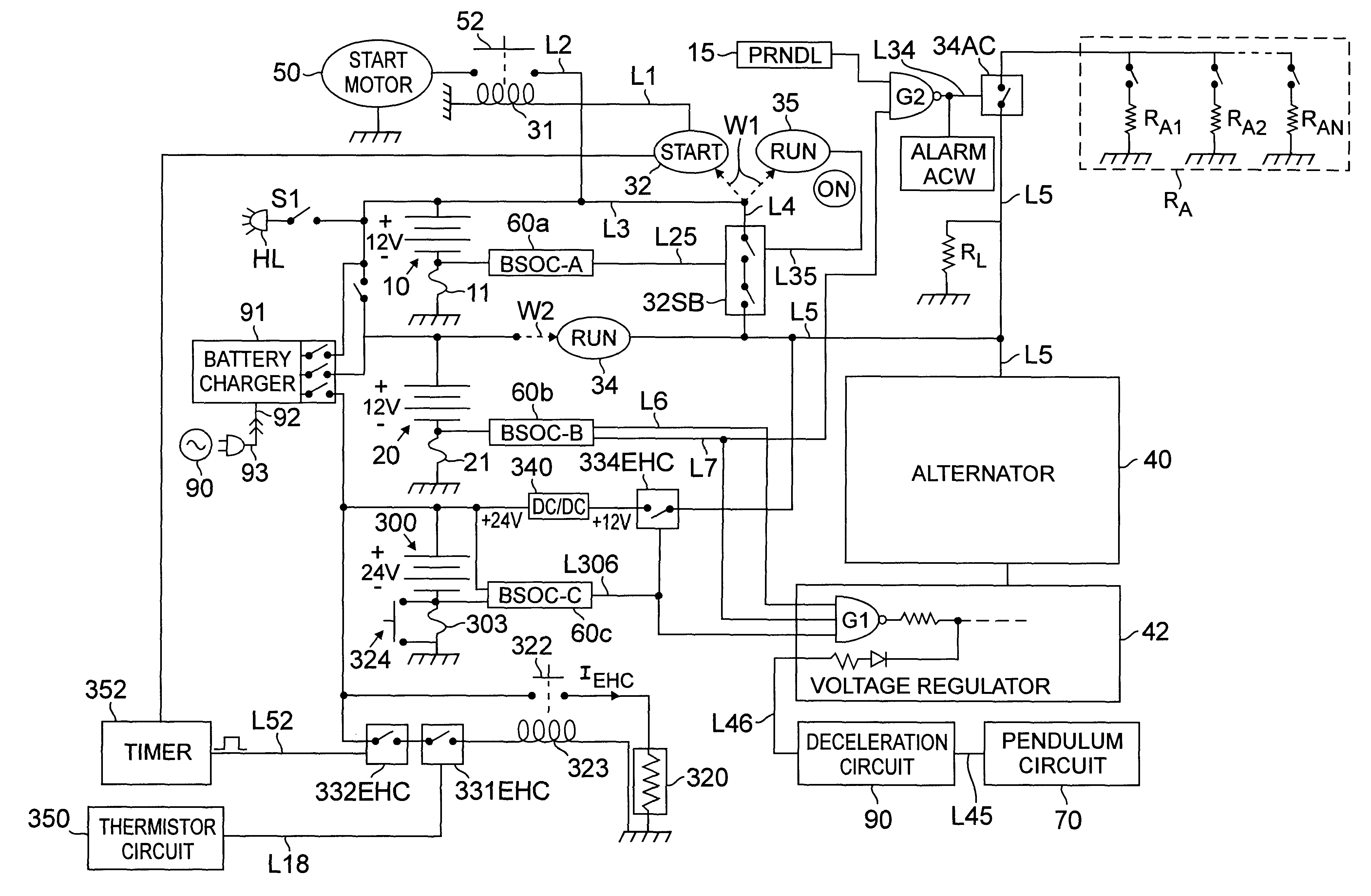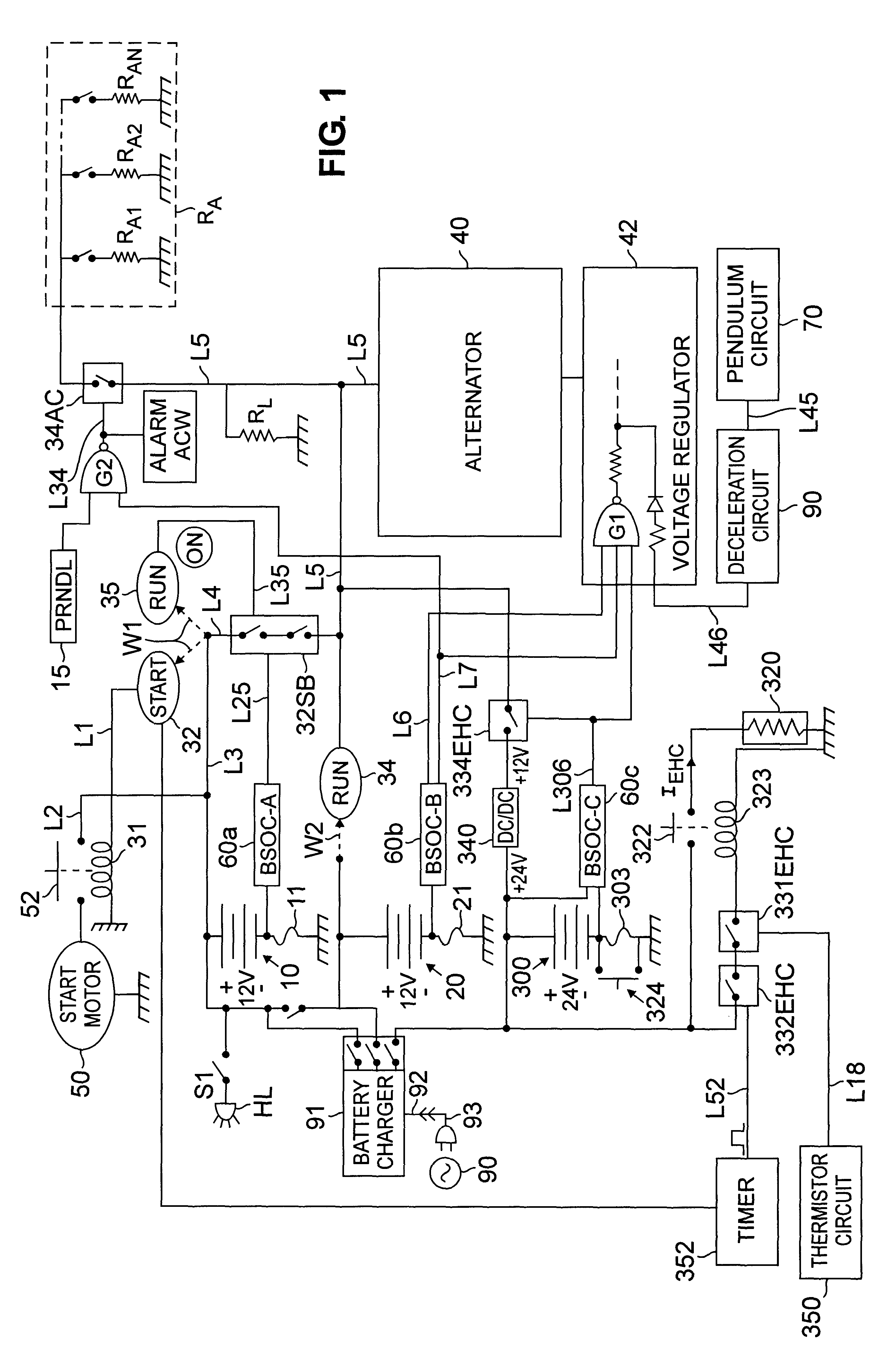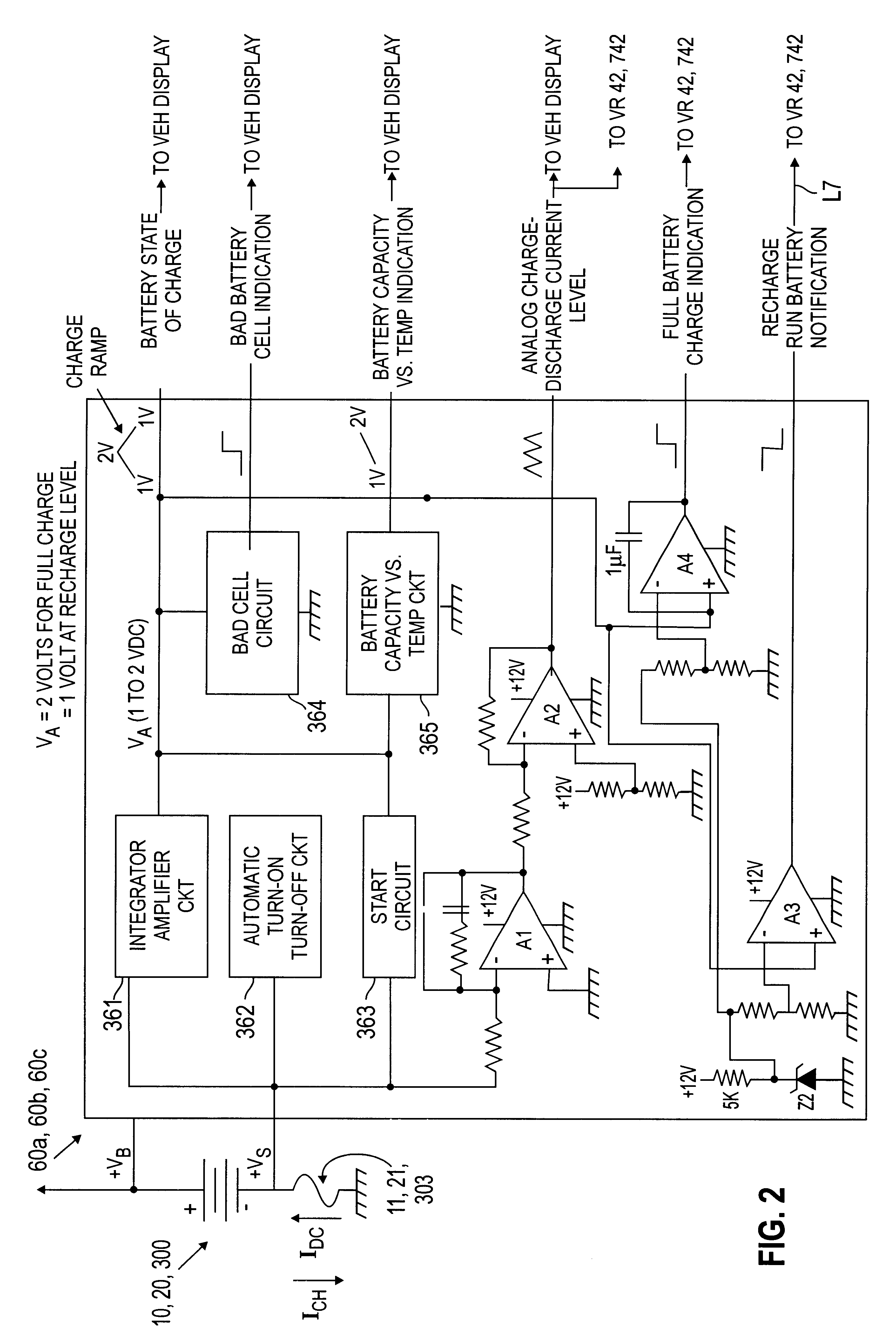Multi-battery fuel saving and emission reduction system for automotive vehicles
a multi-battery, emission reduction technology, applied in the direction of machines/engines, process and machine control, fluid pressure control, etc., can solve the problems of consuming a correspondingly greater amount of fuel, vehicle engine and alternator substantially less than 100% efficiency, and consuming a large amount of fuel. , to achieve the effect of increasing the resistance to rotation of the alternator rotor coil, increasing the control current of the alternator rotor, and rapid increase of the charge of the battery
- Summary
- Abstract
- Description
- Claims
- Application Information
AI Technical Summary
Benefits of technology
Problems solved by technology
Method used
Image
Examples
examples
The advantages of the present invention are illustrated with reference to the fuel consumption test drives made with a 1988 General Motors Oldsmobile Cutlass, shown in FIG. 8, and a 1984 Ford Mercury Lynx, shown in FIG. 9.
All fuel measurements were made based on two-hour runs, under the weather conditions described below and the load currents on the alternator specified. Plot 8A represents highway driving in warm and dry road conditions. Plot 8B represents a combination of city and highway driving in light to heavy traffic and cool and raining road conditions. Plot 8C represents suburban driving in cool and dry road conditions. Plot 8D represents city driving in cool and dry road conditions. Plot 8E represents city driving in heavy traffic in cool and dry road conditions. Plot 9A represents highway driving. Plot 9B represents suburban driving in light traffic. Plot 9C represents suburban driving in heavy traffic. Plot 9D represents city driving in heavy traffic. For highway traffic,...
PUM
| Property | Measurement | Unit |
|---|---|---|
| time period | aaaaa | aaaaa |
| start currents | aaaaa | aaaaa |
| charging voltage | aaaaa | aaaaa |
Abstract
Description
Claims
Application Information
 Login to View More
Login to View More - R&D
- Intellectual Property
- Life Sciences
- Materials
- Tech Scout
- Unparalleled Data Quality
- Higher Quality Content
- 60% Fewer Hallucinations
Browse by: Latest US Patents, China's latest patents, Technical Efficacy Thesaurus, Application Domain, Technology Topic, Popular Technical Reports.
© 2025 PatSnap. All rights reserved.Legal|Privacy policy|Modern Slavery Act Transparency Statement|Sitemap|About US| Contact US: help@patsnap.com



